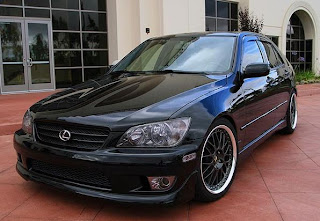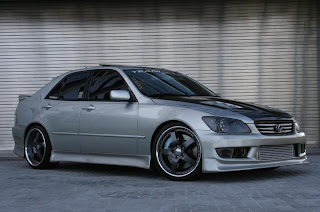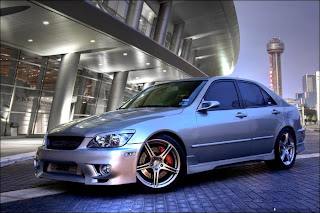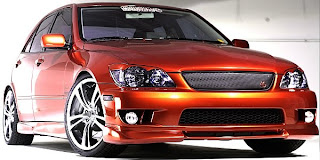The first generation Altezza (codename XE10) was launched in Japan in October 1998, while the Lexus IS 200 (GXE10) made its debut in Europe in 1999 and in North America as the Lexus IS 300 (JCE10) in 2000. The first generation, inline-6-powered IS featured sedan and wagon variants. The second generation Lexus IS (codename XE20) was launched globally in 2006 with V6-powered IS 250 (GSE20) and Lexus IS 350 (GSE21) sedan models. A high-performance V8 sedan version, the IS F, premiered in 2007. Hardtop convertible versions, the Lexus IS 250 c and Lexus IS 350 c, debuted in 2008. According to Lexus, the IS designation stands for Intelligent Sport.
Produced as a direct competitor to the luxury sport sedans of the leading European luxury marques, the XE20 series Toyota Altezza and Lexus IS was designed with a greater performance emphasis than typically seen on prior Japanese luxury vehicles. The engineering work was led by Nobuaki Katayama, who was responsible for the AE86 project. The AS200 and AS300 Altezza sedans formed the basis for the Lexus IS 200 and Lexus IS 300 models sold in markets outside Japan, primarily North America and Europe. A hatchback/station wagon version was sold in Japan as the "Altezza Gita", and in the US and Europe as the Lexus IS SportCross. Overall, the XE20 came in three variants:
Introduced in 1998 with the AS200 (chassis code GXE10) and RS200 (chassis code SXE10) sedans, the compact vehicle was produced using a shortened front-engine, rear-wheel drive midsize platform, allowing Japanese buyers to take advantage of tax savings imposed by Japanese government regulations concerning vehicle exterior dimensions and engine displacement, and adapted parts from the larger second generation Aristo/GS. The 2.0-liter 1G-FE inline-six powered AS200 (GXE10, sedan) featured a six-speed manual transmission as standard, while a four-speed automatic was optional. The 2.0-liter 3S-GE inline-four powered RS200 (SXE10, sedan) featured a six-speed transmission, while a five-speed automatic was optional.
The design received critical acclaim at its 1998 launch, and was awarded Japan's "Car of the Year" honor for 1998–1999. A year later, Lexus began marketing the IS 200 equivalent models in Europe. The IS 200 in Europe was listed as producing 153 brake horsepower (114 kW), with a top speed of 216 kilometres per hour (134 mph), and 0 to 100 kilometres per hour (0–62 mph) acceleration in 9.3 seconds. The styling cues of the rear light clusters on the first generation models were copied by a number of after-market accessory manufacturers for applications on other vehicles. This iconic style of one or more internal lamp units, covered with a clear (or tinted) perspex cover made popular by Lexus, became known in many circles as 'Lexus-style' or 'Altezza lights'.














-1.jpg)
0 comments:
Post a Comment